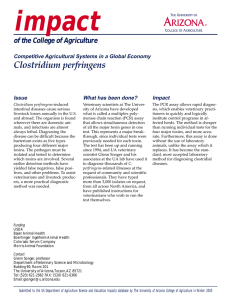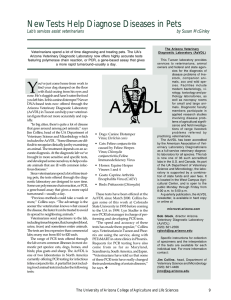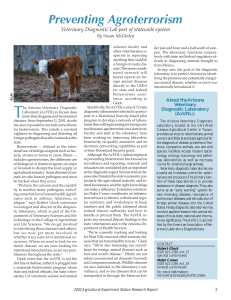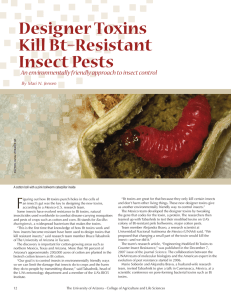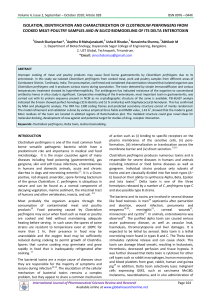impact Clostridium perfringens of the College of Agriculture and Life Sciences
advertisement
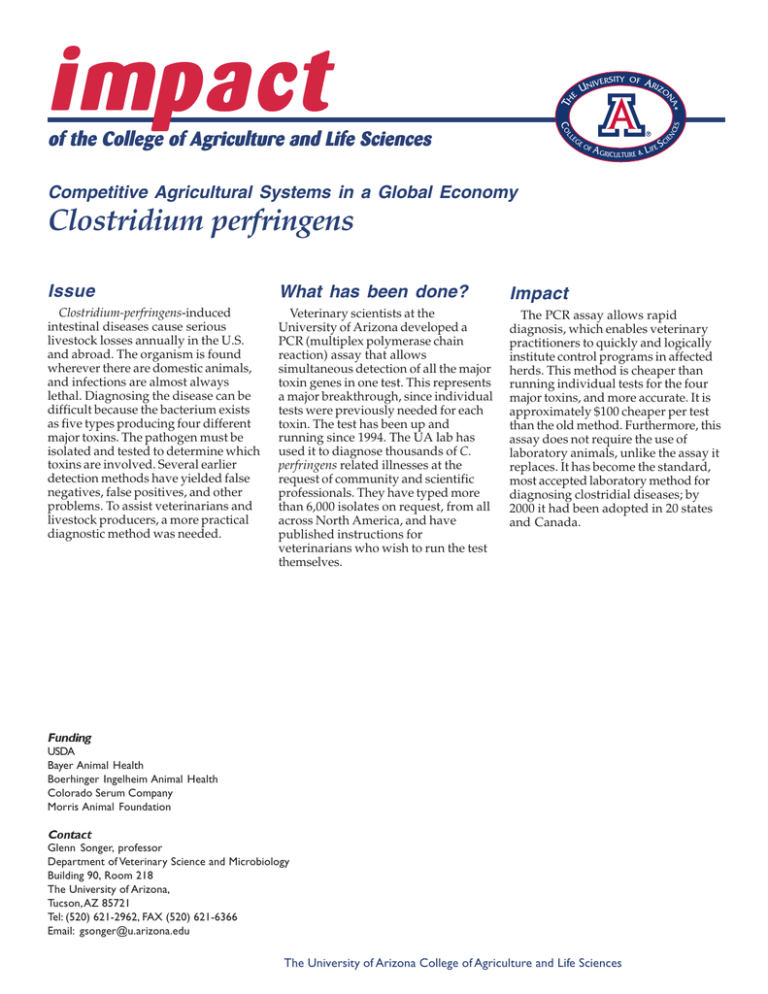
impact LL CES EG RIZ O EO EN CO of the College of Agriculture and Life Sciences UNI NA H Y VERSIT OF E FA GRICULTURE & LIF ES CI Competitive Agricultural Systems in a Global Economy Clostridium perfringens Issue What has been done? Impact Clostridium-perfringens-induced intestinal diseases cause serious livestock losses annually in the U.S. and abroad. The organism is found wherever there are domestic animals, and infections are almost always lethal. Diagnosing the disease can be difficult because the bacterium exists as five types producing four different major toxins. The pathogen must be isolated and tested to determine which toxins are involved. Several earlier detection methods have yielded false negatives, false positives, and other problems. To assist veterinarians and livestock producers, a more practical diagnostic method was needed. Veterinary scientists at the University of Arizona developed a PCR (multiplex polymerase chain reaction) assay that allows simultaneous detection of all the major toxin genes in one test. This represents a major breakthrough, since individual tests were previously needed for each toxin. The test has been up and running since 1994. The UA lab has used it to diagnose thousands of C. perfringens related illnesses at the request of community and scientific professionals. They have typed more than 6,000 isolates on request, from all across North America, and have published instructions for veterinarians who wish to run the test themselves. The PCR assay allows rapid diagnosis, which enables veterinary practitioners to quickly and logically institute control programs in affected herds. This method is cheaper than running individual tests for the four major toxins, and more accurate. It is approximately $100 cheaper per test than the old method. Furthermore, this assay does not require the use of laboratory animals, unlike the assay it replaces. It has become the standard, most accepted laboratory method for diagnosing clostridial diseases; by 2000 it had been adopted in 20 states and Canada. USDA Bayer Animal Health Boerhinger Ingelheim Animal Health Colorado Serum Company Morris Animal Foundation Glenn Songer, professor Department of Veterinary Science and Microbiology Building 90, Room 218 The University of Arizona, Tucson, AZ 85721 Tel: (520) 621-2962, FAX (520) 621-6366 Email: gsonger@u.arizona.edu The University of Arizona College of Agriculture and Life Sciences
